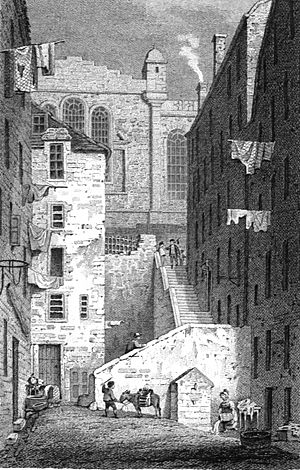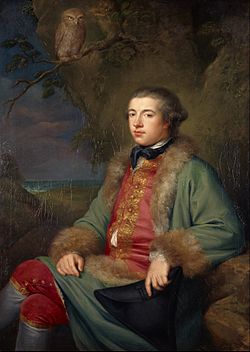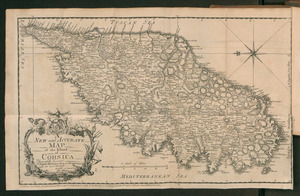James Boswell facts for kids
Quick facts for kids
James Boswell
|
|
|---|---|
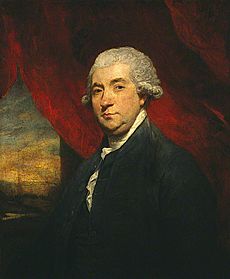
Portrait by Sir Joshua Reynolds, 1785
|
|
| Born | 29 October 1740 (N.S.) Edinburgh, Scotland |
| Died | 19 May 1795 (aged 54) London, England |
| Occupation | Lawyer, diarist, biographer |
| Language | English |
| Nationality | Scottish |
| Citizenship | Great Britain |
| Alma mater | |
| Notable works | Life of Johnson |
| Spouse | |
| Children |
|
James Boswell, 9th Laird of Auchinleck ( 29 October 1740 (N.S.) – 19 May 1795), was a Scottish biographer, diarist, and lawyer, born in Edinburgh. He is best known for his biography of his friend and older contemporary, the English writer Samuel Johnson, which is commonly said to be the greatest biography written in the English language. A great mass of Boswell's diaries, letters, and private papers were recovered from the 1920s to the 1950s, and their ongoing publication by Yale University has transformed his reputation.
Contents
Early life
Boswell was born in Blair's Land on the east side of Parliament Close behind St Giles' Cathedral in Edinburgh on 29 October 1740 (N.S.). He was the eldest son of a judge, Alexander Boswell, Lord Auchinleck, and his wife Euphemia Erskine. As the eldest son, he was heir to his family's estate of Auchinleck in Ayrshire. Boswell's mother was a strict Calvinist, and he felt that his father was cold to him. As a child, he was delicate. Kay Jamison, Professor of Psychiatry at Johns Hopkins, in her book Touched with Fire, believes that Boswell may have suffered from bipolar disorder, and this condition would afflict him sporadically all through his life. At the age of five, he was sent to James Mundell's academy, an advanced institution by the standards of the time, where he was instructed in English, Latin, writing and arithmetic.
The eight-year-old Boswell was unhappy there, and suffered from nightmares and extreme shyness. Consequently, he was removed from the academy and educated by a string of private tutors. The most notable and supportive of these, John Dunn, exposed Boswell to modern literature, such as The Spectator essays, and religion. Dunn was also present during Boswell's serious affliction of 1752, when he was confined to the town of Moffat in northern Dumfriesshire. This afforded Boswell his first experience of genuine society. His recovery was rapid and complete, and Boswell may have decided that travel and entertainment exerted a calming therapeutic effect on him.
At thirteen, Boswell was enrolled into the arts course at the University of Edinburgh, studying there from 1753 to 1758. Midway through his studies, he suffered an episode of serious depression but recovered fully. Boswell had swarthy skin, black hair and dark eyes; he was of average height, and he tended to plumpness. His appearance was said to be alert and masculine.
Upon turning nineteen, he was sent to continue his studies at the University of Glasgow, where he attended the lectures of Adam Smith. While at Glasgow, Boswell decided to convert to Catholicism and become a monk. Upon learning of this, his father ordered him home. Upon returning, he was re-enrolled at Edinburgh University and forced by his father to sign away most of his inheritance in return for an allowance of £100 a year.
On 30 July 1762, Boswell passed his oral law exam, after which his father decided to raise his allowance to £200 a year and permitted him to return to London. In this period, Boswell wrote his London Journal and, on 16 May 1763, met Johnson for the first time. The pair became friends almost immediately, though Johnson became more of a parental figure in Boswell's eyes. Johnson eventually nicknamed him "Bozzy".
The first conversation between Johnson and Boswell is quoted in Life of Samuel Johnson as follows:
[Boswell:] "Mr Johnson, I do indeed come from Scotland, but I cannot help it."
[Johnson:] "That, Sir, I find, is what a very great many of your countrymen cannot help."
European travels
It was around three months after this first encounter with Johnson that Boswell departed for Europe with the initial goal of continuing his law studies at Utrecht University. He spent a year there and although desperately unhappy the first few months, eventually quite enjoyed his time in Utrecht. He befriended and fell in love with Isabelle de Charrière, also known as Belle van Zuylen, a vivacious young Dutchwoman of unorthodox opinions, his social and intellectual superior. Boswell admired the young widow Geelvinck who refused to marry him. After this, Boswell spent most of the next two years travelling around the continent, his Grand Tour. During this time he met Jean-Jacques Rousseau and Voltaire with a recommendation letter of Constant d'Hermenches, and made a pilgrimage to Rome, where his portrait was painted by George Willison. Boswell also travelled to Corsica to meet one of his heroes, the independence leader Pasquale Paoli. His well-observed diaries and correspondence of this time have been compiled into two books, Boswell in Holland and Boswell on the Grand Tour.
Mature life
Boswell returned to London in February 1766. After spending a few weeks in the capital, he returned to Scotland, buying (or perhaps renting) the former house of David Hume on James Court on the Lawnmarket. He studied for his final law exam at Edinburgh University. He passed the exam and became an advocate. He practised for over a decade, during which time he spent no more than a month every year with Johnson. Nevertheless, he returned to London annually to mingle with Johnson and the rest of the London literary crowd, and to escape his mundane existence in Scotland. He found enjoyment in playing the intellectual rhyming game crambo with his peers.
Boswell was a major supporter of the Corsican Republic. Following the island's invasion by France in 1768, Boswell attempted to raise public awareness and rally support for the Corsicans. He sent arms and money to the Corsican fighters, who were ultimately defeated at the Battle of Ponte Novu in 1769. Boswell attended the masquerade held at the Shakespeare Jubilee in Stratford-upon-Avon in September 1769 dressed as a Corsican Chief. He was also, much to the chagrin of his friend Johnson, a strong defender of the American Revolution.
Boswell married his cousin, Margaret Montgomerie, on 25 November 1769. James and Margaret had four sons and three daughters. Two sons died in infancy; the other two were Alexander (1775–1822) and James (1778–1822). Their daughters were Veronica (1773–1795), Euphemia (1774 – c. 1834) and Elizabeth, known as 'Betsy', (1780–1814).
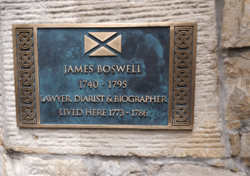
Despite his relative literary success with accounts of his European travels, Boswell was only a moderately successful advocate. Throughout his life, from childhood until death, he was beset by severe swings of mood.
In 1773 Boswell bought the house of David Hume (who moved to a new house on South St David Street/St Andrew Square) on the south east corner of James Court. He lived there until 1786.
Later life
Boswell was a frequent guest of Lord Monboddo at Monboddo House, a setting where he gathered significant observations for his writings by association with Samuel Johnson, Lord Kames and other notable attendees.
After Johnson's death in 1784, Boswell moved to London to try his luck at the English Bar, which proved even less successful than his career in Scotland. In 1792 Boswell lobbied the Home Secretary to help gain royal pardons for four Botany Bay escapees, including Mary Bryant. He also offered to stand for Parliament but failed to get the necessary support, and he spent the final years of his life writing his Life of Samuel Johnson.
During this time his health began to fail. Boswell died in London in 1795. Boswell's remains were interred in the crypt of the Boswell family mausoleum in what is now the old Auchinleck Kirkyard in Ayrshire. The mausoleum is attached to the old Auchinleck kirk.
Life of Samuel Johnson
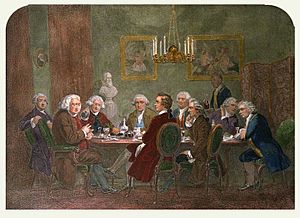
When the Life of Samuel Johnson was published in 1791, its style was unique in that, unlike other biographies of that era, it directly incorporated conversations that Boswell had noted down at the time for his journals. He also included more personal and human details than those to which contemporary readers were accustomed. Instead of writing a strictly fact-based record of Johnson's public life in the style of the time, he painted a more personal and intimate portrait of the man than was normal in biographies of the day.
Macaulay and Carlyle, among others, have attempted to explain how a man such as Boswell could have produced a work as detailed as the Life of Johnson. The former argued that Boswell's uninhibited folly and candour were his greatest qualifications; the latter replied that beneath such traits was a mind to discern excellence and a heart to appreciate it, aided by the power of accurate observation and considerable dramatic ability.
Position on slavery
Boswell was present at the meeting of the Committee for the Abolition of the Slave Trade in May 1787 set up to persuade William Wilberforce to lead the abolition movement in Parliament. However, the abolitionist Thomas Clarkson records that by 1788 Boswell "after having supported the cause ... became inimical to it". Boswell's most prominent display of support for slavery was his 1791 poem "No Abolition of Slavery; or the Universal Empire of Love", which lampooned Clarkson, Wilberforce and Pitt. The poem also supports the common suggestion of the pro-slavery movement, that the slaves actually enjoyed their lot: "The cheerful gang! – the negroes see / Perform the task of industry."
Major works
- The Cub at Newmarket (1762, published by James Dodsley)
- Letters Between the Honourable Andrew Erskine, and James Boswell, Esq. (1763)
- Dorando, a Spanish Tale (1767, anonymously)
- An Account of Corsica, The Journal of a Tour to That Island, and Memoirs of Pascal Paoli (1768)
- "The Rampager" (1770–82, a series of 20 essays published sporadically in the Public Advertiser)
- The Hypochondriack (1777–83, a series of 70 essays published monthly in the London Magazine)
- The Journal of a Tour to the Hebrides with Samuel Johnson, LL.D (1785)
- The Life of Samuel Johnson, LL.D 2 vols. (1791, reprinted in Everyman's Library)
- No Abolition of Slavery (1791) (poem)
See also
 In Spanish: James Boswell para niños
In Spanish: James Boswell para niños


